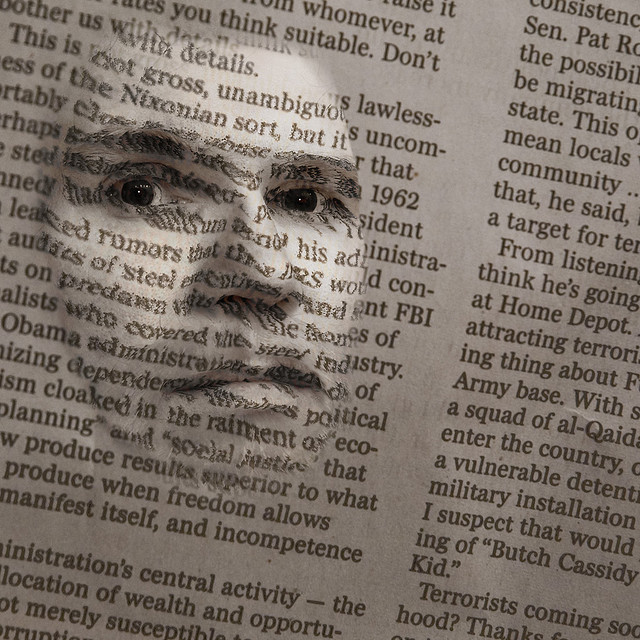In It’s Complicated, by Danah Boyd, she discusses the complicated situations teens face with social media. A big topic of discussion is privacy: “The default in most interpersonal conversations, even those that take place in public settings, is that interactions are private by default, public through effort… In other words, when participating in networked publics, many participants embrace a widespread public-by-default, private-through-effort mentality” (Boyd). It is said that a verbal conversation (in person) is a private act, that is only public when made to be. On the other hand, an interaction on the internet is public, an only made private when made to be. This statement catches my attention because it focuses on social norms in reality versus expectations of the internet. In real life, people are expected not to ease drop one another, intrude on conversations, or not interact unless brought into the conversation. On the internet, however, all of these expectations become void, as the internet is a public place. A person has to go through special care to make sure something is private, rather than assume that others are not paying attention. It makes you think, are your conversations private at all? Probably not. Just because it is not considered socially acceptable to listen in on a conversation does not mean people do not do it. Privacy of your affairs should never be expected, but rather always assumed to be public by default. It is in our nature to be curious, and at times that leads us to be intrusive. It is never safe to assume that something is private, especially just because it is socially expected to be. The only fool proof way to achieve privacy is through effort
Tag: publicity
“There’s a big difference between being in public and being public.… At first blush, the desire to be in public and have privacy seems like a contradiction…. teens’ engagement with social media highlights the complex interplay between privacy and publicity in the networked world we all live in now.” (boyd 57)
In boyd’s book It’s Complicated, he discusses many theses related to privacy and publicity. To my surprise, “many journalists, parents and technologists seem to believe that a willingness to share in public… is incompatible with a desire for personal privacy” (boyd 56). While it is true that by posting photos on Facebook, teens give up the privacy, of these photos, it does not mean that teens forfeit all their privacy. Emerging social networks lead to teens’ increasing online engagement with not just their friends, but also the public. As a result, we post more and more texts and photos, but we also become more aware of what to post, and with whom we share. We actually care a lot about our privacy, since we usually post things that are insignificant to be publicized, and communicate information of much significance with our close friends via texting, the more private medium.
However, the social norms mentioned by boyd are indeed quite complex on social media. Most people follow these norms in real life; for instance, when two people sit next to each other, one does not stare at the other’s phone screen to see what he or she is texting. Nonetheless, there exist conflicts between social norms and the concept of public social media. We post things, giving everyone the permission to see them, yet on the other hand we may not expect strangers and other unwanted people to view parts of our life. What’s at stake is not whether someone can view but whether one should. The reconciliation of online social norms and the public nature of social media is a challenge in today’s networked world, and should be solved as social media becomes more widely used.
It’s easy to think of privacy and publicity as opposing concepts, and a lot of technology is built on the assumption that you have to choose to be private or public. Yet in practice, both privacy and publicity are blurred. (danah 76)
As with many of the issues surrounding cryptography, privacy versus publicity is often viewed as a false dichotomy. Both privacy and publicity are relative terms, though. Without a public realm of information with which to compare it, privacy would not exist. The problem with sharing information publicly, though, arises when we must decide what information we wish to keep private. As discussed in this chapter, the fact that teens wish to keep information private does not indicate that they have something to hide; rather, it is an example of them choosing which parts of their lives to keep to themselves.
In a way, making aspects of our lives public can actually increase our privacy relatively. It is possible for teens to hide behind a screen and only post what they want other people to see, not the whole truth. By choosing which aspects of our lives to keep private, we are realizing that just about everything else can be accessed by the general public. It is a trade-off that many choose to make, but in reality is just a consequence of trying to find a balance between privacy and publicity. In an era where private information is becoming increasingly public, we must work to find a happy medium where we can easily communicate with others while still respecting individual decisions on which parts of life they wish to keep private.
“Instead of signaling the end of privacy as we know it, teens’ engagement with social media highlights the complex interplay between privacy and publicity in the networked world we all live in now.” (boyd, 57)
Growing up in a world full of social media, I’ve become used to the idea of a thousand of my “friends” on Facebook seeing every photo I post. However, whenever I add a new picture or update my status, the vast number of people seeing what I have decided to publish is one of the last thoughts on my mind. I believe that social media has somewhat numbed me to the effects of what I post as the access to my information is instantly shared with those following me on social media, thus giving them complete freedom to use this knowledge however they like.
In boyd’s book It’s Complicated, she addresses the relationship between privacy and social media as teens today continue to make more and more aspects of their lives public. While past generations often lived in complete privacy, teens have become used to sharing most of their lives with the world.
But even though fewer aspects of our lives remain private, this does not mean that the concept of privacy has disappeared altogether. Instead, I believe that what we truly wish to remain private often does, as teens understand the drastic consequences social media often brings. Once a photo or text is shared, the sender automatically surrenders its privacy. Because social media gives people the access to publicize everything at their disposal, teens have therefore adjusted to a new perspective of privacy in which it is often only their most valued information that remains completely confidential.


In Cory Doctorow’s Little Brother, the author examines the boundaries of invasion of privacy in today’s society. As the main character, Marcus, and his friends fight against the U.S. Department of Homeland Security’s intense surveillance of all citizens following an astronomical terrorist attack, they must establish methods for communicating without their messages being interrupted by the DHS, whose head members are scrambling to accumulate evidence that Winston took part in planning the attack.
In chapter six of Doctorow’s social criticism, Marcus explains that he will need to encrypt his messages to avoid the prying eyes of the government. In his brief discussion of cryptography and its effectiveness, Marcus makes a startling affirmation. “You have to publish a cipher to know that it works,” he claims. While this idea initially seems to violate the idea of cryptography, encoding messages to keep the content safe from being revealed to anyone but the intended receiver, after some thought Marcus’s bold statement reveals his true wisdom. He explains that while he could create his own cipher, he would never know if it was secure from others because he had created it himself without first testing its security. Contrary to “anyone” who can create their own cipher system that to them is unbreakable, Marcus suggests first publicizing said cipher system before use. This method would release one’s code into cyber space or print, encouraging others to attempt to crack it. Marcus concludes his argument by simply stating that in today’s society, you do not simply create your own cipher and assume it is secure; rather, he emphasizes using “stuff” that has been around forever, but has never been successfully cracked.
I initially found Marcus’s assertion that publicizing one’s cipher was the ultimate way to ensure security to be naive, but with further examination found it to be most insightful. Initially publishing the cipher you created to see if others could indeed break it seems silly. You would not be able to utilize the cipher if it is released and then cracked, and simply utilizing the cipher without checking its security could be more efficient; however, if you publish your cipher for everyone to see, and encourage others to break it, you are utilizing the most valuable source for ensuring its security. Ultimately, having an insecure cipher is more detrimental than losing speediness while searching for an effective cipher.
Image: In The News by paurian, Flickr (CC)
